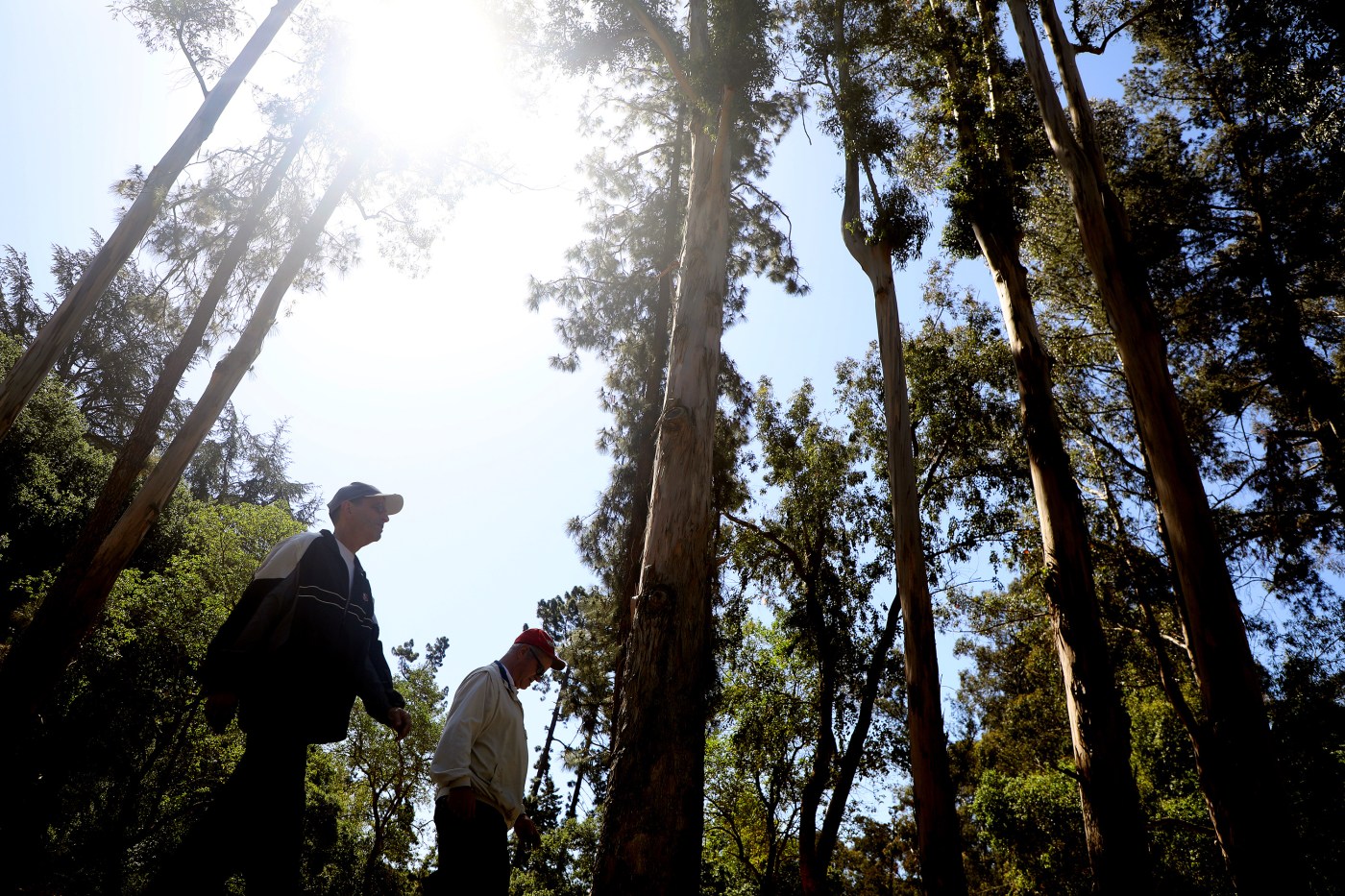Insurers in California have sounded the alarm: A warming climate has dramatically raised the risk of devastating wildfires and with it, the cost of providing coverage. But now a Peninsula lawmaker says those insurance companies should credit the state and homeowners for the work done to reduce our vulnerability to wildfires.
State Sen. Josh Becker, a Menlo Park Democrat, has introduced a bill that would require insurers to consider the state’s efforts to thin flammable brush and trees as well as property owners’ steps to make their homes more fire resistant, such covering vents and clearing vegetation. Those efforts would need to be incorporated into their risk modeling to determine coverage decisions and costs.
“What we’re seeing is that in addition to the impact of home hardening, that forest treatment is going to have a big impact on wildfire risk, and that’s not being taken into account,” Becker said. “You have to take these into consideration.”
Becker’s bill, SB 1060, comes as state officials scramble to prop up a home insurance market on the brink of collapse, with major insurers restricting coverage and refusing to renew policies in many parts of the state. The bill is scheduled for its first hearing before the Insurance Committee on Wed., April 24.
The American Property Casualty Insurance Association, which represents insurers, said that while it supports wildfire mitigation efforts like home and community hardening, the bill “has several complicating factors to consider.”
“The California Department of Insurance already requires insurers that use risk models to take into consideration specific mitigations and provide consumers discounts,” the industry association said. “The department is also in the process of developing regulations to authorize new types of catastrophe models that factor in the risk of wildfires and mitigation efforts taken by individuals and communities. We believe the department should be allowed time to adopt these regulations.”
Becker said the proposed law wouldn’t mandate any particular discount or result, only for insurers to account for wildfire risk reduction efforts.
“The bill just requires them to do the work to collect the data,” Becker said. “If the models show these activities aren’t helpful, then we shouldn’t be spending billions of dollars on this, we should be spending it on other things.”
California suffered 14 of its 20 most destructive wildfires on record in the last 10 years, a period that included a record drought. Insured losses from those blazes totaled more than $45 billion, according to the Insurance Information Institute.
Insurers say that as wildfire risks have risen with global temperatures, California’s regulations on what they can charge consumers haven’t allowed policy premiums to keep up, forcing them to reduce their exposure by discontinuing coverage in riskier areas.
The state’s elected insurance commissioner, Ricardo Lara, has promised to overhaul regulations by the end of the year to address the industry’s top complaints. That would speed approval of rate increases, let insurers base them on catastrophe models, and pass on their costs for reinsurance, which helps them absorb catastrophic losses. Lara in exchange wants insurers to commit to covering more homes in areas at greater risk of wildfire.
Consumer advocates have argued the changes would just end up costing homeowners more without guaranteeing more coverage, pointing to other disaster stricken states like Florida.
Some California homeowners have been stung with massive increases in premiums — if not stripped of coverage altogether and forced onto the state’s last-resort FAIR Plan. That plan is a private high-risk pool that provides minimal coverage at multiple times the cost of regular policies. Many homeowners in the Santa Cruz Mountains, the North Bay and East Bay foothills have had to switch to that plan after their traditional coverage was dropped.
“This is top of mind for so many of my constituents,” Becker said. “This is affecting thousands and thousands of households.”
Becker said it’s gotten so bad that the California Department of Forestry and Fire Protection can’t even get insurance for at least two and as many as 11 of its fire stations.
Becker said higher temperatures weren’t the only factor that fueled the state’s destructive wildfires. Vegetation management policies over the years allowed fuels to pile up in and around forests that before modern fire suppression would have burned more regularly. Those accumulated fuels, left bone-dry by the drought, drove explosive wildfires.
But California since 2017 has spent $3.7 billion on wildland fuel reduction, thinning and vegetation management, Becker said.
He points to a 2021 analysis by the Nature Conservancy and Willis Towers Watson, the world’s third-largest insurance broker, which found that applying ecological forestry practices — prescribed burns and thinning to remove smaller trees and other vegetation in overgrown forests — could lower insurance premiums 41% on average for homes. That research was based on an ecological forest restoration project in the watershed of the Placer County Water Agency in the Tahoe National Forest.
State officials in recent years also have been promoting techniques in which homeowners can reduce their property’s wildfire vulnerability by removing vegetation, wood and other combustibles near the home and cover vents with screens to keep hot embers out. Lara has told insurers they must credit homeowners on their policies for those measures, though many say they have yet to receive such benefits.
But Becker said that as these home-hardening measures get adopted across communities, it reduces overall fire risk and that also should be reflected in the modeling insurers use in their underwriting decisions.
“We need to see a number of homes in a community (do the work) to have an impact on that model,” Becker acknowledged. “But it helps. Whether it’s cities or individuals, the people doing the work should get the reward.”












